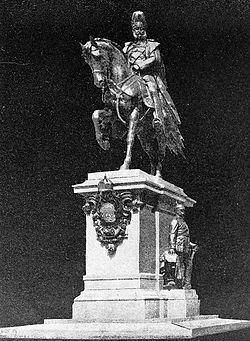Name Johannes Pfuhl | Died May 5, 1914 | |
 | ||
Johannes Pfuhl (20 February 1846 – 5 May 1914) was a German sculptor.
Contents

Biography
He was born in Löwenberg, in the Prussian Province of Silesia. He studied in the Berlin Academy of Fine Arts under Hermann Schievelbein. He became his master's assistant and completed his plans for the bronze memorial once in the Dönhoffplatz (now the Marion-Gräfin-Dönhoff-Platz), Berlin. Soon after Schievelbein's death Pfuhl settled in Charlottenburg. He made a few portrait busts, but his more typical products were colossal groups or reliefs.
Works
References
Johannes Pfuhl Wikipedia(Text) CC BY-SA
